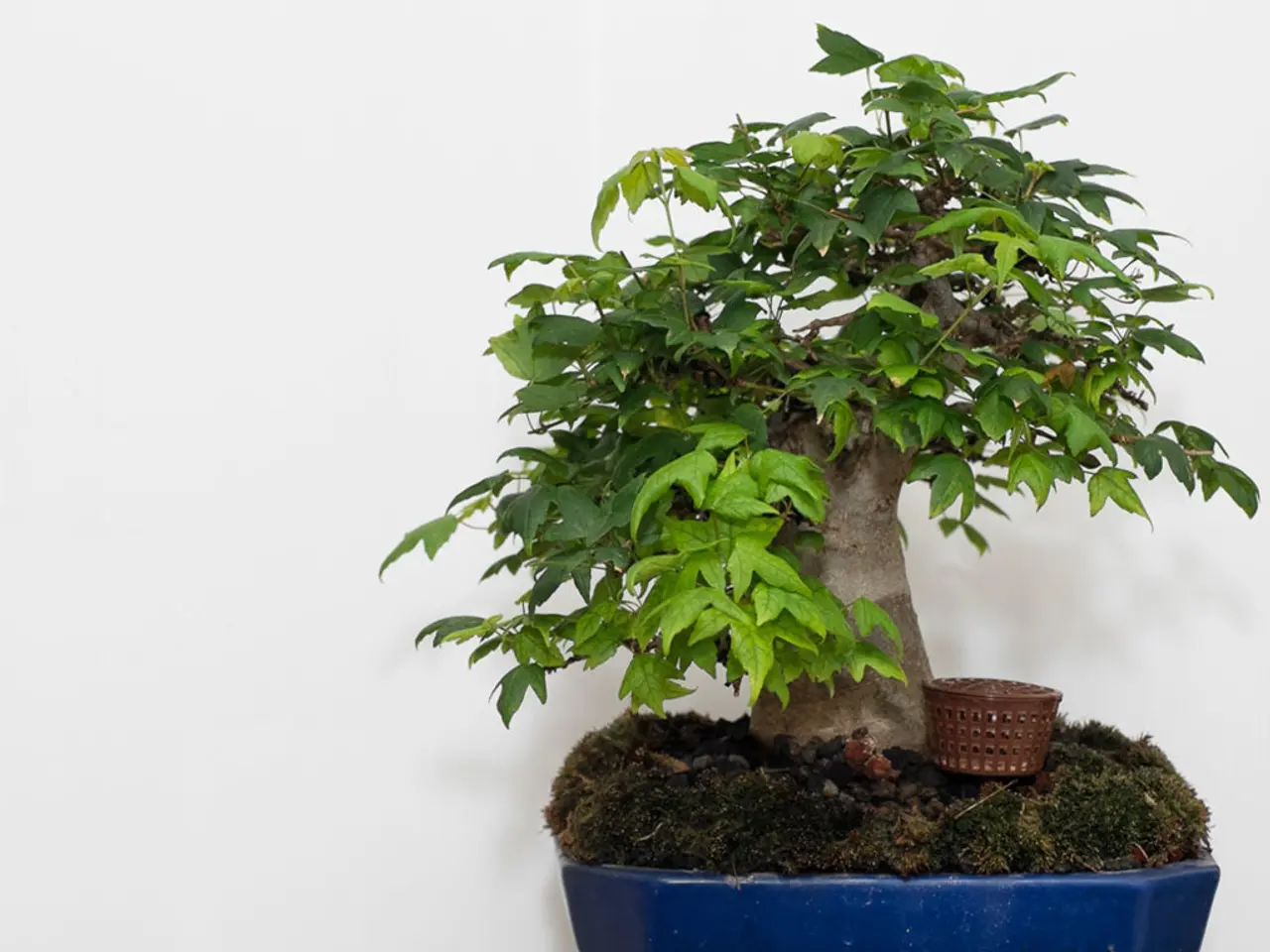Revitalizing Bonsai Roots for Enhanced Growth: Essential Steps for Optimal Health
In the world of bonsai cultivation, maintaining a healthy root system is essential for the tree's overall well-being and aesthetic appeal. Precision-crafted bonsai instruments are essential for root cleaning, ensuring a gentle, therapeutic touch that nurtures rather than harms the roots.
To successfully disentangle bonsai roots, consider using a soft-bristled brush or a chopstick, a root hook, or a gentle rocking motion. Dead roots can be identified by their dark, brittle, or mushy texture, lack of flexibility or resilience, foul or sour odor, and lack of signs of new growth.
The disentanglement of bonsai roots is a delicate and crucial step in cleaning bonsai roots. Dead or damaged roots should be identified and removed during the disentanglement process to prevent decay and promote healthy growth. Regularly mist the roots with water to keep them hydrated and pliable during the disentanglement process.
When it comes to pruning, use sharp, sterile pruning shears or concave cutters to make clean cuts, reducing damage and risk of infection. When pruning roots, remove thick, old, or circling roots first to encourage the growth of finer feeder roots, which absorb nutrients better. Avoid over-pruning roots, as this can weaken the tree—typically, removing about one-third of the root mass is safe depending on species and age.
Clean the root ball by rinsing away old soil gently, then trimming dead or rotten roots, which are soft, dark, and easily breakable. Protect pruned roots after cutting by repotting quickly and watering adequately to reduce stress on the bonsai.
Understanding bonsai root anatomy facilitates precise pruning. Bonsai roots include thick structural roots that provide support and fine feeder roots that absorb water and nutrients. Removing too many structural roots can destabilize the tree. Fine feeder roots are essential for health and regrow if cleaned and pruned carefully. Identifying dead vs. healthy roots (healthy are firm and light-colored) helps maintain vitality.
Knowledge of root growth patterns allows better shaping of the root system in the pot for aesthetics and health, like preventing root circling which can choke the tree over time. In essence, knowing how roots function and respond enables selective trimming that encourages a dense, balanced root system, supporting the tree’s overall health and aesthetic form.
When performed correctly, root cleaning will not harm your bonsai tree's delicate roots; in fact, it can benefit them by removing dead or damaged roots, improving circulation, and promoting healthy growth. Frequently, bonsai trees that have undergone proper root cleaning and pruning exhibit a significant increase in healthy root growth.
Aftercare is crucial. Bonsai enthusiasts should prioritize gentle handling, ensuring the tree is watered carefully, providing sufficient humidity, avoiding extreme temperatures and direct sunlight, fertilizing sparingly, monitoring for signs of stress or disease, and referring to a trusted bonsai repotting guide for species-specific guidance on post-pruning care.
It's generally not recommended to clean bonsai roots during winter dormancy as this sensitive process can cause undue stress. By fostering a healthy root environment, bonsai enthusiasts can create an ideal setting for their trees to flourish. Common signs of root-bound bonsai trees include slowed growth, yellowing or wilting of leaves, increased water consumption, visible roots growing out of the pot, and decreased resistance to disease and pests. Root bound, a common issue in bonsai cultivation, occurs when the root system outgrows its container, causing the tree to become pot-bound and potentially leading to stunted growth, nutrient deficiencies, and increased susceptibility to disease.
In the domain of bonsai cultivation, the intricate dance between roots and container is a delicate balance of art and science. The best techniques for root cleaning and pruning bonsai roots involve careful, informed cutting with sharp, clean tools and an understanding of bonsai root anatomy to avoid harming the tree’s health. By following these guidelines, bonsai enthusiasts can ensure the long-term health and beauty of their trees.
- To complement your bonsai's lifestyle, consider exploring various fashion-and-beauty, food-and-drink, home-and-garden, pets, travel, cars, education-and-self-development, shopping, casino-and-gambling, sports, and weather-related activities.
- Precision-crafted tools are essential for cleaning bonsai roots, just as precision-crafted tools can enhance your cooking experience in food-and-drink activities.
- When pruning bonsai roots, remember to maintain the integrity of the fine feeder roots, much like maintaining the health of your pets ensures their longevity.
- After properly cleaning and pruning your bonsai roots, you will likely observe a significant improvement in healthy root growth, similar to how attention to education-and-self-development can yield personal growth.
- Regular misting of bonsai roots is essential during the disentanglement process, just as regular watering is vital for healthy plants in home-and-garden activities.
- If you notice signs of root-bound bonsai trees, such as slowed growth or increased water consumption, consider repotting them to restore their vitality, much like how repairing a car can revive its performance.




